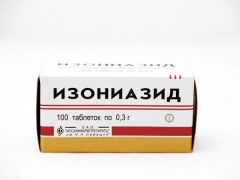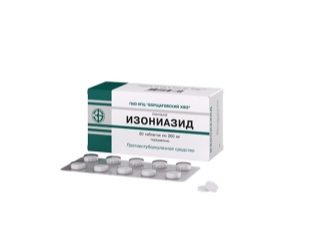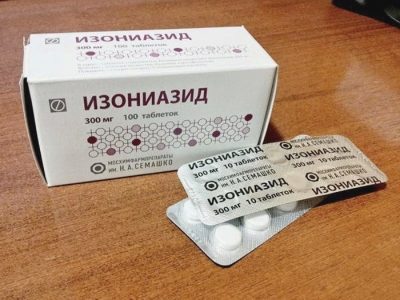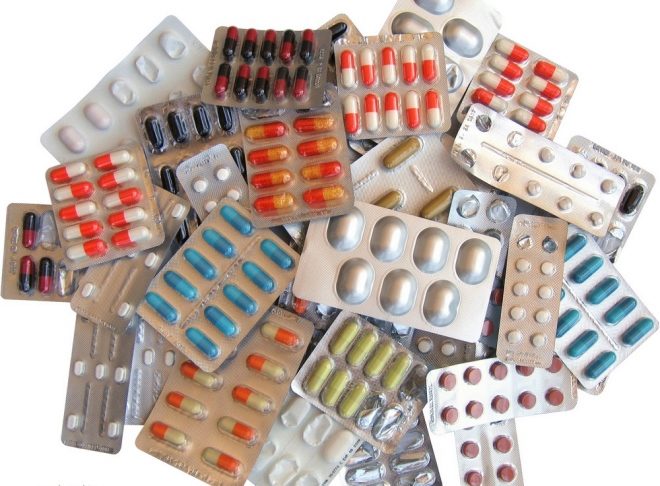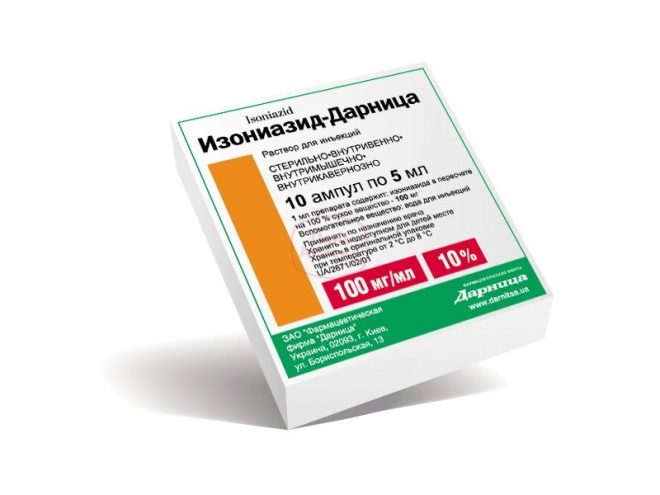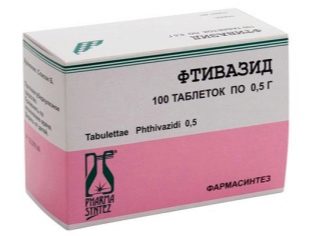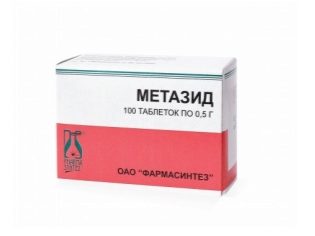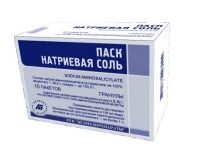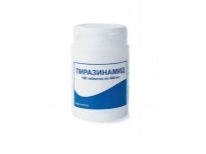Isoniazid for children: instructions for use
"Isoniazid" is often used in the treatment of tuberculosis in adults, but not everyone knows whether it is possible to give such a drug to a child. When it is prescribed to children and in what dosage is prescribed - this is the subject of this article.
Release form
"Isoniazid" is available in several forms:
- Pills, which in one box can be 10, 20, 50, 100 or more.
- Injection. It contains 10% of the active ingredient and is produced in 5 ml ampoules, of which there are 5 or 10 in one pack.
In addition, there is Isoniazid Syrup, but it is rarely found in pharmacies, since it is produced by a Ukrainian company.
Composition
The active substance of the drug is the same name - isoniazid. Its dosage per tablet may be 100, 150, 200 or 300 mg, and in one milliliter of the solution for injections such a compound is contained in a dose of 100 mg.
Operating principle
"Isoniazid" has a bactericidal action against mycobacteria, which are the causative agents of tuberculosis. This substance inhibits the synthesis of membranes in the cells of such microorganisms, acting at the stage of their reproduction. In this case, isoniazid destroys bacteria inside and outside the affected cells.
Taken inside the drug is absorbed very quickly, after which it is distributed throughout the body. After metabolic changes in the liver, most of the medication leaves the body with urine.
Its greatest effectiveness is noted in the acute process, and isoniazid destroys atypical mycobacteria weakly. If monotherapy is used, then in 70% of cases the pathogen very quickly becomes resistant to such treatment.
Indications
"Isoniazid" is prescribed for the treatment of tuberculosis in various forms, and for the prevention of such a disease. The medication is given after contact with patients with tuberculosis, and with a positive reaction to tuberculin (Mantoux reaction).
At what age is it allowed to take?
There are no age limits for the use of Isoniazid, but only a doctor should prescribe such a drug (for both babies and older children).
Contraindications
The drug is not prescribed to children with:
- Epilepsy.
- Poliomyelitis.
- Mental illness.
- Seizures convulsions in the past.
- Impaired kidney function.
- Liver disease.
- Pathologies of peripheral nerves.
- Hypersensitivity to the drug.
Reduced dosage of medication is required in small patients with psoriasis, bronchial asthma, pathologies of the nervous system, increased blood pressure, exacerbation of eczema, hypothyroidism or porphyria.
Side effects
Treatment with Isoniazid can provoke:
- Skin rash or another form of allergy.
- Dizziness, sleep problems, pain in the head and other disorders of the nervous system.
- Vomiting or nausea. In rare cases, hepatitis develops.
- Heartache.
Instructions for use and dosage
Since the simultaneous ingestion of food prevents the absorption of isoniazid, drink tablets should be after a meal. If the patient does not tolerate such a form, the medicine is prescribed in the form of injections into a vein or into muscles. In addition, medication may be administered into the cavities in the lungs.
The dosage is determined based on the form of the disease and the nature of its course. In childhood, "Isoniazid" is prescribed for 10-20 mg of the active substance for each kilogram of body weight of a small patient. In this dose, the drug is given once a day.
Medication can be prescribed 2-3 times a week. In this case, the dose per 1 kg of baby weight will be 20-40 mg of isoniazid. The duration of administration is determined individually, and the maximum dose per day is 300 mg of the active component of tablets or injections.
After the injection, bed rest is required (at least 1 hour).
Overdose
If the patient takes Isoniazid in too high a dose, it will lead to vomiting, dizziness, disorientation, visual disturbances, lethargy, seizures, and other negative symptoms. For treatment, vitamin B6, barbiturates, diuretics, activated carbon, sodium bicarbonate and other symptomatic agents are used.
Interaction with other drugs
To reduce the risk of side effects of Isoniazid, it is often prescribed in combination with thiamine, glutamic acid or pyridoxine. The drug can be combined with other antibiotics acting on mycobacteria. They are often prescribed together to eliminate the rapid emergence of microorganism resistance to anti-tuberculosis treatment.
In this case, the combination with rifampicin may have a hepatotoxic effect (especially if the patient's liver function is impaired). The same side effect is possible when the drug is combined with Paracetamol. If you assign "Isoniazid" and "Phenytoin" or "Carbamazepine", their concentration in the blood increases, which causes a harmful effect on the patient's body.
Terms of sale and storage
To buy "Isoniazid" in a pharmacy, you need a prescription from a doctor. For the storage of tablets, one should find a place hidden from children and direct rays of the sun, where the temperature will be no higher than 25 degrees Celsius, and ampoules with a solution require a lower storage temperature (up to +10 degrees). The shelf life of the tablet form is 5 years, and ampoules are 2 years.
Reviews
On the application of "Isoniazid" there are different opinions. In the treatment of tuberculosis, many reviews emphasize that the drug has helped cure such an infection. At the same time, many parents are afraid of side effects and refuse to take this medication, but experts note its good efficacy against mycobacteria and is called one of the most effective anti-tuberculosis drugs.
Negative responses of mothers contain complaints about the appearance of nausea, sleep problems, abdominal pain and other symptoms in the child while taking it. However, there are also reviews in which parents note the good tolerability of the drug.
Analogs
Other anti-tuberculosis drugs, for example, Coxerine, Terizidone capsules, Pyrazinamide, Kombitub, Ftivazid, Pizina, Kombutol, Metazid, PASK or Ftizamaks tablets can serve as a replacement. Since such drugs have other active components, and also has its own characteristics of use, only a doctor should select the analogue (preferably an experienced TB specialist).
You will learn more about tuberculosis and how to protect against it from the transfer of Dr. Komarovsky.
